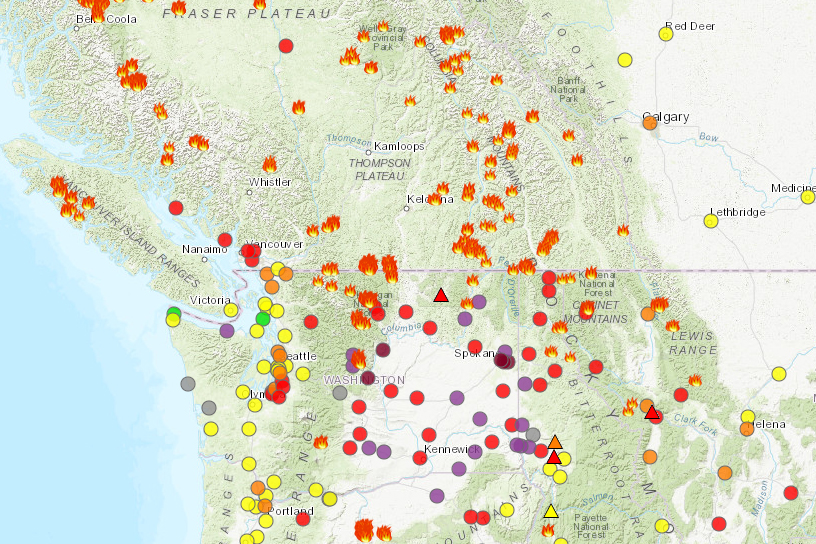The air quality, as everyone can see, got significantly worse over the weekend on the Pullman and Spokane campuses. (The adjacent image can be found at the Washington Smoke blog.
This morning the air quality particulate count was:
- Spokane: 380
- Pullman: 181
- Tri-Cities: 119
- Everett: 80
- Vancouver: 82
Starting Sunday, Facilities Services on the Pullman campus transitioned the HVAC systems in all buildings, where it was possible, to the air-recirculation mode. This allows the systems to recirculate more internal supply air, versus bringing in air from outside.
Unfortunately, not all buildings can be shifted to recirculate. Some lab buildings require 100% outside air all the time.
In an email to the Pullman campus, Craig Cole, director of construction services and operations, noted, “Even in recirculation mode, you will still smell smoke inside of the buildings, please let your building occupants know that. We will monitor the air filters in the systems and replace as necessary, but again, that will not completely clear the smell.”
Cole asked faculty and staff to help by keeping building windows closed to limit smoky outside air from coming in. He also asked people in labs to “pull the sashes down” on fume hoods whenever they are not in use.
“All hoods are equipped with filters, so air quality in the hoods will not be the issue, but we just want to limit the overall amount of outside air to a minimum,” he said.
Jon Schad, WSU Spokane Campus Facilities, similarly noted that campus does not have any operable windows, and that outside air intake has been adjusted to minimum where possible.
Bill Pierce, control tech supervisor at WSU Spokane, added, “we have had the outside air dampers closed and the buildings in full recirculation mode for about three weeks. We also have been changing filters with a lot more frequency as the smoke plugs them up in a week’s time.”
To monitor conditions in your area, simply do a search online for “air quality + city name.”
Precautionary steps regarding HVAC systems vary from campus to campus, based upon the air quality. For example, air quality on the Vancouver campus is currently considered “moderate,” so similar HVAC steps are not necessary, at this time.
On a personal level, WSU Spokane Health Sciences offered the following suggestions when air quality is at hazardous levels, like today:
Older adults, pregnant women, children and people with preexisting respiratory and heart conditions may be more likely to get sick if they breathe in wildfire smoke. If you experience any signs of respiratory distress or other health concerns, contact your health care provider.
There are many steps you can take for limiting exposure to unhealthy, smoky air:
- Avoid being outdoors.
- Use public transportation rather than walking or biking.
- Stay inside as much as possible
- Keep indoor air clean by closing windows and using an air filter and air conditioning. Make sure your air conditioner’s fresh-air intake is closed and the filter is clean to prevent outdoor smoke from getting inside.
- Don’t add to indoor pollution. Avoid using candles, fireplaces or gas stoves. Do not vacuum, because vacuuming stirs up particles already inside your home. Do not smoke, because smoking puts even more pollution into the air.
- If you have asthma or another lung disease, follow your doctor’s advice about medicines and your respiratory management plan.







